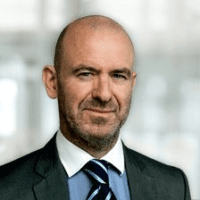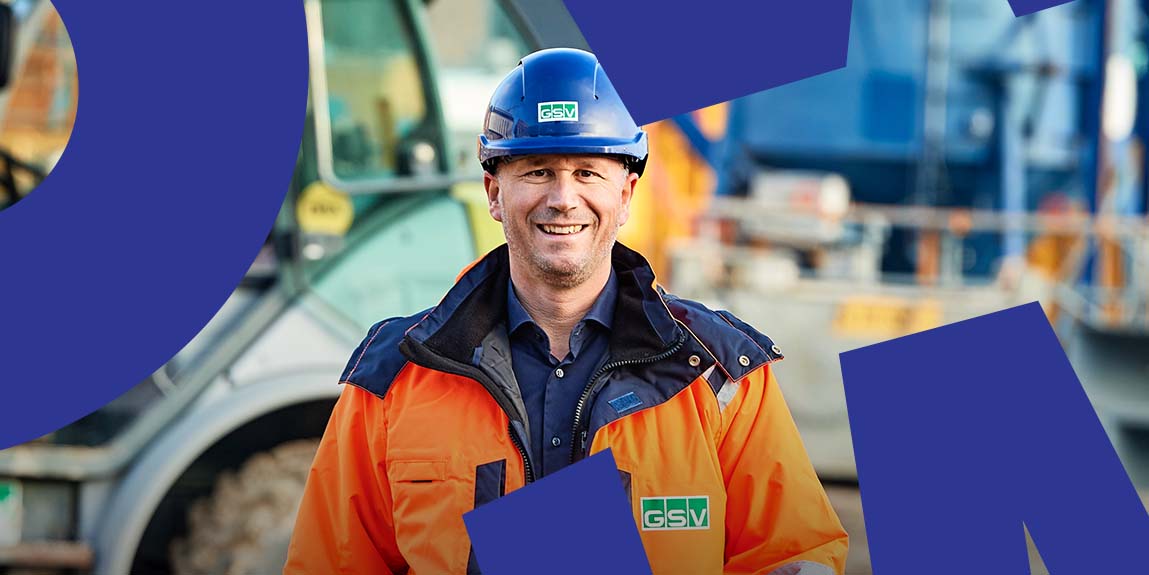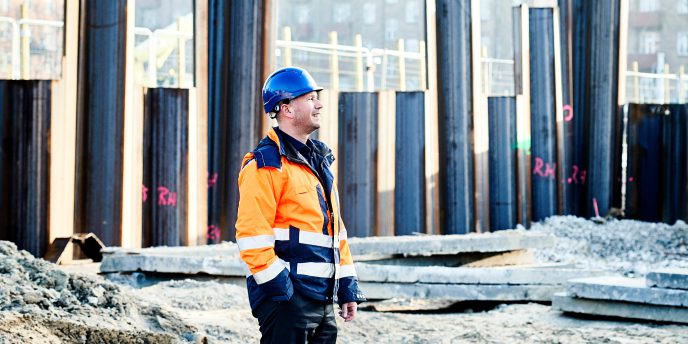

Good practice tends to start at home. And when Denmark’s GSV began a root-and-branch examination of everything it did as an organization some years ago to make sure it was being as sustainable as possible, it lit a fire that has burned bright ever since.
That has seen the Danish rental market leader slide almost unintentionally into the vanguard of a nation-wide sustainability bandwagon, championing best practice not only internally but through the logistics chain.
“We had an acquisition and growth strategy which meant we’d incorporated seven other companies so in order to harmonize our processes we set about digitalizing across the board,” says Dan Vorsholt, deputy chairman of the board at GSV. “We really focused our efforts on removing all paper and making sure we were set up to work that way.”
Although GSV used scope 1 of the Greenhouse Gas Protocol of 2001 as it’s guiding benchmark, the fundamental premise of the process was centered on efficiencies and business harmonization. And that’s when GSV began to notice something they hadn’t necessarily expected.
As the process took hold, it unveiled significant data findings that enabled the Hedehusene-headquartered rental to slowly but surely track and monitor what was going on with its machines and then use that to actively seek to influence customer behavior.
“If you were to go back say 10 years, a rental company was really only interested in renting machines out and letting them stay on for as long as possible on the construction site,” says Vorsholt. “Once we started to get in all this idling data, and other metrics like the number of machines on site and so on essentially via our telematics devices, we started to try to turn this mentality around.”
Indeed, telematics has been the missing cog that has made much of this possible, says the GSV deputy chairman. “The key has been filtering this massive amount of data so we can create proper insight that people can understand and digest. After all, if it’s too complicated, the customer just won’t understand it.
“We could see that we simply didn’t need so many machines for the Danish market, automatically leading to a lower carbon footprint in factories because we didn’t need to produce so many machines.”
“And with that insight, that’s when the carbon footprint really started to come into the picture,” he says. “We could see that we simply didn’t need so many machines for the Danish market, automatically leading to a lower carbon footprint in factories because we didn’t need to produce so many machines.
”Of course, we still wanted to rent the machines out, but we also wanted to have them back as fast as possible so we could optimize our own fleet management.”
That meant GSV was, for example, able to halve its own internal process time from 16% to 8%, and reduce the number of machines it needed to buy by 1,000 giving an estimated saving of 9.77 tonnes of CO2. It also took out solar panels at its Greve depot which now provide 30% of its on-site energy. With that in mind, it has set extremely ambitious targets to reduce its scope 1 emissions by 70% by 2030, established on a baseline for its scope 1 & 2 emissions of 6,461 tonnes in 2022.
And armed with these findings GSV went out to the industry with a remit to influence the narrative with a nudge here and a shove there primarily using its ‘Mit GSV’ (My GSV) online platform as its weapon of choice. That’s meant potentially taking greater control over its scope 2 and, further down the line, scope 3 emissions.
“This began in 2019 through the ‘Fremtidens Byggeri’ (Construction of the Future) conferences and what we wanted to show to our customers was what we could do together to make construction better,” says Vorsholt. “But in those early days, it didn’t really have that much impact. The reaction was very conservative.”

But GSV persevered. As the recognition started to come in — it picked up the ERA award in 2022 for best digital implementation as well as a nomination in the sustainability section — it began a campaign of persuading customers to make behavior changes. That included opting for battery-powered machines over diesel, sharing machines where possible and pushing biofuel use, given Cellulosic Ethanol has the potential to cut emissions by up to 84%.
It even gave customers advice on how to park their machines in the right way and order to minimize their CO2 footprints.
“We know we can’t set out to achieve what we want without doing this together.”
“These little increments might have seemed small taken in isolation, but together we started to create a culture where they became invested — maybe not to the same extent as we were admittedly — in getting their emissions down,” Vorsholt says. “We really saw a change in this from 2021, maybe because the 2030 targets set by the UN on global emissions suddenly seemed to be much closer and maybe that helped to focus minds.”
It’s little wonder then that the bi-annual Fremtidens Byggeri conference to be held September 5, 2023 is expected to be the biggest yet with more than 500 already signed up for the event bringing together, says Vorsholt, “some of the most knowledgeable minds and experience” the industry has to offer.
“We know we can’t set out to achieve what we want without doing this together,” says Vorsholt, who served as GSV CEO for nearly 15 years before his recent step up to the board. “But we’re really hoping that this time, we can use the event to shift the process from talking and really begin to take decisive action on reaching our 2030 goals and putting construction in a better place.
“This is no longer the time where we can just sit and wait and hope things get better,” he says. “I think we have a lot of work to do, but I also don’t think it’s impossible.
“We’re lucky that Scandinavia is probably more receptive than most to the sustainability message,” says Vorsholt, who also chairs the influential Danish Equipment Association. “We’ve really seen this strengthen in the last 12 months, especially as more and more of the really big city projects in Denmark now require a strong record on emissions and CO2 tracking to win the contract.”
“This is no longer the time where we can just sit and wait and hope things get better. I think we have a lot of work to do, but I also don’t think it’s impossible.”
It is, says Vorsholt, about partnership where trust and transparency between rental and customer has become critical. And from there, the culture develops where positive reinforcement encourages better behavior in and around the workplace and in relation to their machine usage and optimization.
“You build a culture that everybody buys into and build towards the better good. If you can give through the data some beneficial financial impact from that behavior change, then customers are inevitably invested in monitoring their carbon footprints and making incremental improvements day by day.”
That, says Vorsholt, can be about persuading customers to opt for a more expensive battery-powered excavator over a diesel option, because not only will it be a more sustainable choice, it could also prove more cost effective in the long run. Likewise, the impact of biofuels and their immediate impact on emissions.
“There’s also a generational change happening where the next generation out of university looks at your company and wants to know what you are doing to make the world better,” he adds. “They want you to fit with their vision and ideals and we’re getting great reaction from them because they see how committed we are to this.”
It’s one of the reasons he’s so hopeful for the future, despite the size of the challenge.
“I think the development in our industry over the next five years will be significantly more than the past five years,” he says. “There will be a huge jump from where we are today, and if we are going to reach the goals, we will need that. It can only be done together.”
The Interview is part of an ongoing series where we sit down with industry leaders and discuss the topics that matter in construction. Read what IPAF’s Karin Nars believes we should be doing to widen the industry’s appeal beyond its usual constituency.

